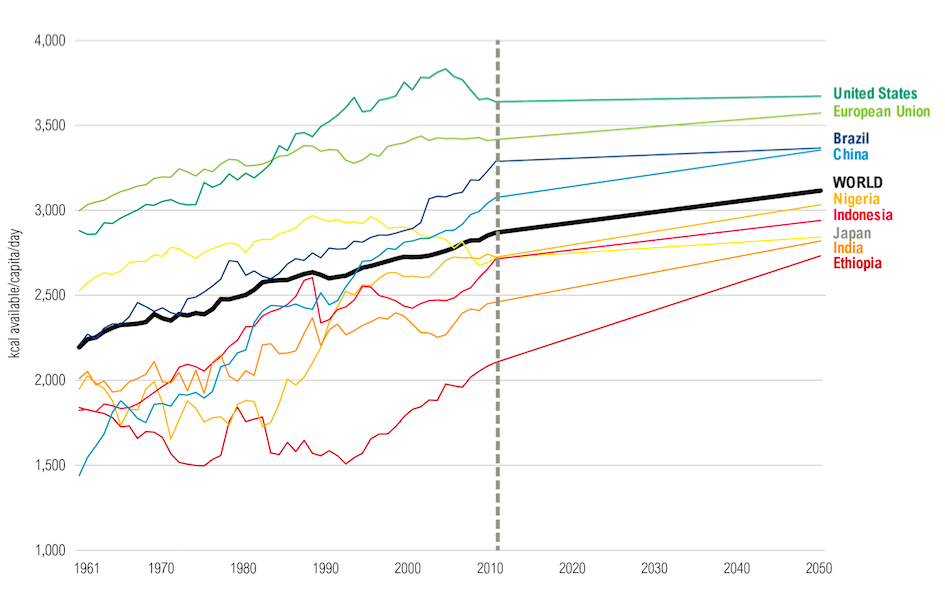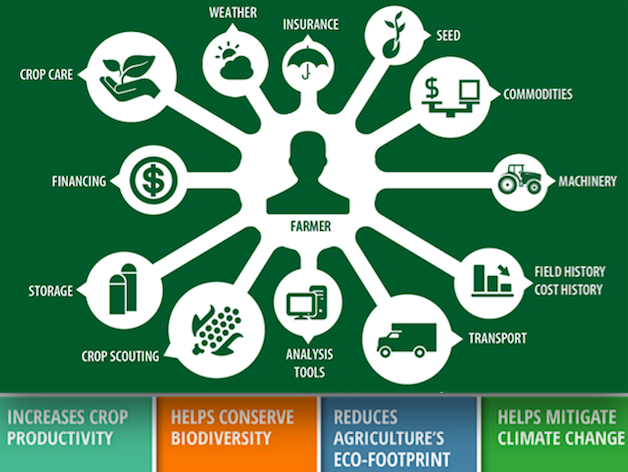The agricultural sector is facing a significant challenge; a 70% increase in global food production is needed in order to sustain the nearly 10 billion people expected to be on the planet by 2050. One in 10 people out of the 7.4 billion alive today are already malnourished and the crop yields that soared as a result of the Green Revolution of the 1960s are beginning to flatline. The future of agriculture therefore depends on how countries, organizations and investors revive agricultural yields in a safe and sustainable manner.
Agriculture today is responsible for keeping our global populations fed without causing further damage to our planet. Unsustainable farming methods have caused nearly 40% of the world arable land to be degraded. Soil nutrients are being exploited significantly faster than they can be replenished. The industry’s drain of the world’s fresh water supplies (70% of the total) is very concerning, as is the rising demand for protein around the world that is driving deforestation in the search for more land to grow feed for livestock.
The Global Demand for Food is Rising
Source: World Resource Institute (2016)
One solution that will increase the quality and safety of agricultural production is using innovative technology to make existing farms more intelligent. Imagine systems whereby satellites automatically detect drought patterns, tractors constantly evaluate plant health and phone apps reveal specific diseases afflicting crops. Precision agriculture already uses these remote sensing devices to provide farmers with information that allows them to establish the best procedures for crop management on the ground. Traditionally, farmers utilized the same levels of irrigation and agrochemicals on the entire field (often through spray-and-pray application methods). However varying parts the field are prone to experiencing different conditions and therefore require customized inputs. New ‘variable rate technologies’ collect vast amounts of information from crop yields, soil mapping, fertilizer application, weather data and machinery use to optimize crop management by the meter, thereby booting yields and cutting costs. The data for these systems can be gathered via satellite, drone technologies and even ‘smart’ tractors.
Investment in these new technologies has been doubling annually for the last four years, from $500 million in 2012 to $4.6 billion in 2015. There is still considerable room for growth as agriculture makes up 10% of global GDP ($7.8 trillion) yet only receives 3.5% of venture capital investments. The European Union has sponsored several projects to develop precision farming technologies through the Seventh Framework Programme and Horizon 2020.
The Benefits of Precision Agriculture
Source: International Society of Precision Agriculture (2016)
While many innovators are looking for the best practices to increase agricultural yields, there is another solution to our increasing demand for food that should be considered. The Untied Nations Food and Agricultural Organization estimate that 1.3 billion tonnes of food is wasted every year. The fact that one-third of total food production goes to waste when 800 million people go hungry around the world is unacceptable. A major factor in this is waste is the short shelf life of foods. Some of the latest research into neem oil has demonstrated its ability as a natural preservative to control meat spoilage.
The agricultural industry is changing its tune, moving away from internally led innovation towards increasing exposure and investment from entrepreneurs and the scientific community. Rather than simply degrading more land for more crops, agriculture is beginning to utilize high-tech, precision farming techniques that focus on restoring the productivity of land that is already in use and even boosting their yields several times over.

